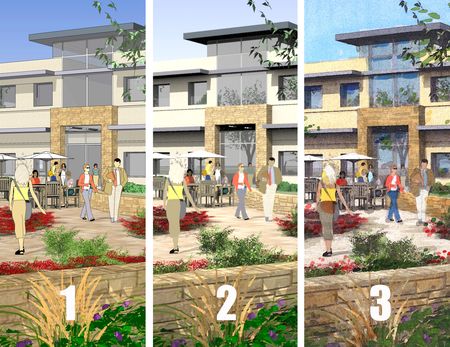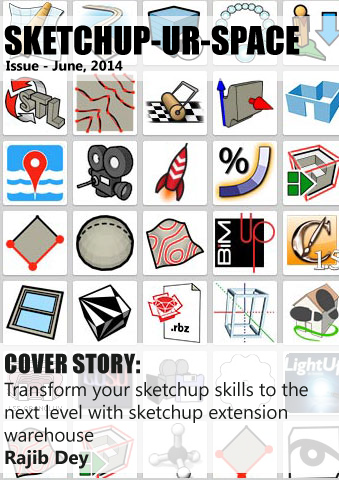Sketchup Resources
- SKP for iphone/ipad
- SKP for terrain modeling
- Pool Water In Vray Sketchup
- Rendering Optimization In Vray Sketchup
- Background Modification In sketchup
- Grass Making with sketchup fur plugin
- Landscape designing in
Sketchup - Apply styles with sketchup
- Bedroom Making with sketchup
- Review of Rendering Software
- Enhancing rendering for 3d modeling
- The combination of sketchup &
BIM - Exterior Night Scene rendering with vray
Author :
Blog

I have taught students and professionals numerous visual presentation techniques ranging from traditional sketches and drawings to sophisticated computer hybrid methods involving 3D SketchUp models, Photoshop image manipulation and complex digital combinations of lines, textures and color.
The three renderings shown below were created from the same base SketchUp model and represent just three of many different visual outcomes. It is important to learn how to communicate your design with the most effective rendering technique that matches the project complexity, schedule, budget and client expectations. I did not explain any “step-by-step” approach to how I produced these images but would rather”why” each is a strong visual representation.
1.SketchUp Rendering 2.Photorealistic Rendering 3.Hybrid Watercolor
Google SketchUp Rendering
When creating a presentation rendering straight from a Google SketchUp model, pay close attention to all of the basic 3D components, model settings and exporting options. I carefully placed each plant, person, shrub, tree and furniture component in this composition. I rotated the sun angle to create an ideal shadow cast onto the columns from the overhead pergola. Shadow light and dark intensity was adjusted for optimum contrast and I exported a high resolution image 5000pixels wide (which equates to an image 250dpi x 17inches wide).
Note: this rendering option is quick and effective for concept design phases when the design is evolving.
Photorealistic Rendering
The lack of glass reflection and flat lighting characteristics of a standard SketchUp model can be overcome using a photorealistic plugin to SketchUp such as Shaderlight. The lines disappear and the overall image has a softer and more realistic character. This visualization method is quite popular but can be a detriment to the design process if utilized too early in the design process. Some clients may react with “the design looks finished and there is no room for change…”.
Note: Photorealistic renderings are most effective if the landscape trees and shrubs are well built 3D components.
Hybrid Watercolor Rendering
This technique piggybacks onto the photorealistic option by using the same rendering with Shaderlight process, but “softens” the image with a layer of colored markers and digital filtering in Adobe Photoshop. I printed the photorealistic rendered image at a much lighter tone onto coated matte paper and colored most of the elements with very light Chartpak AD markers. The image was scanned at 300dpi and modified in Adobe Photoshop using the watercolor filter. Note:
Note: This digital watercolor option has maximum detail from the SketchUp model, great lighting characteristics from the Shaderlight rendering process, and rich image character that you might encounter with a traditional watercolor.


